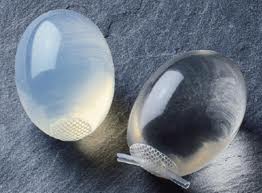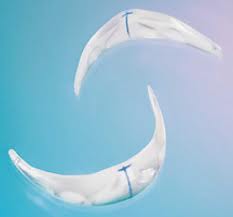Synthetic implants have a wide variety of uses throughout the body, usually creating an aesthetic augmentation of a deficient or missing body part. The vast majority of face and body implants are composed of silicone due to its biocompatibility, low cost and ease of insertion. Besides breast implants, every other silicone implant is composed of a non-liquid composition with various degrees of firmmess/softness known as a durometer level.

A new version of a testicular implant was reported in the October 2012 issue of the Journal of Sexual Medicine. Out of Mexico, a case was reported in which a 45 year-old man had his right testicle implanted/reconstructed with a chin implant. The patient was born with only a testicular remnant on the right side and a normal-sized left testicle. The smaller testicle was initially removed and replaced but apparently had a residual size mismatch. In a subsequent surgery, the right testicular implant was revised by adding to it a silicone chin implant to make a better size match to the opposite side. He went on to heal without complications and a satisfactory result.

The only real perplexing part of the story is why not just use a larger testicular implant? Silicone testicles come in a variety of sizes. Ordering a new larger one would seem the more logical approach…unless one didn’t have it or want to order a new one and used what was lying and available…a chin implant. A one-piece implant is always better than a two-piece composite which can eventually separate due to the shearing stresses in a highly mobile area like the scrotum.
Dr. Barry Eppley
Indianapolis, Indiana


